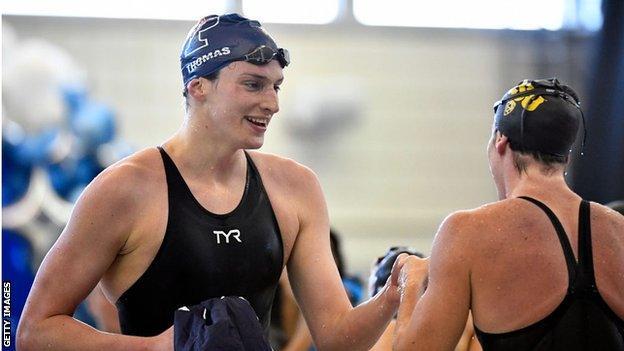The White House recently addressed the contentious issue of keeping men out of womenŌĆÖs sports, emphasizing the importance of safeguarding fair competition and opportunities for female athletes. In a statement released on its official .gov platform, the administration outlined policy measures aimed at ensuring that sports categories remain strictly divided by biological sex. This development comes amid ongoing national debates and legislative actions concerning gender identity and athletic participation, highlighting the complex intersection of sports, rights, and equity.
Background and Rationale Behind the White House Stance on WomenŌĆÖs Sports
The White House’s position on maintaining the integrity of womenŌĆÖs sports stems from a commitment to fairness, safety, and equity. In recent years, debates surrounding participation policies have intensified, prompting federal attention to ensure that female athletes are protected in competitive environments designed specifically for them. This stance underscores the value of preserving opportunities for women and girls to compete on a level playing field, free from undue physical advantages that might compromise the spirit of fair competition.
Key drivers behind this approach include:
- Scientific evidence indicating physiological differences that influence athletic performance.
- Equity concerns reflecting the foundational purpose of womenŌĆÖs sports programs.
- Safety considerations related to protecting athletes from injury risks that may be elevated in mixed categories.
- Policy consistency across federal and state levels to uphold Title IX and other gender-based protections.
| Factor | Impact on Sports Policy | White House Focus |
|---|---|---|
| Physical Differences | Performance disparities highlighted | Ensuring fair competition |
| Safety Risks | Preventing injury in contact sports | Protecting female athletes |
| Legal Protections | Title IX enforcement emphasis | Equal opportunity maintenance |
Impact of Transgender Athlete Participation on Competitive Fairness and Opportunities
Competitive integrity within womenŌĆÖs sports has become a focal point of national discourse, with advocates expressing concerns about preserving level playing fields. Critics argue that transgender women bring physiological advantages accrued during male puberty, such as increased muscle mass and bone density, which may not be fully mitigated by hormone therapy. These disparities raise questions about the fairness of competition, potentially disadvantaging cisgender female athletes who have trained rigorously to excel in their disciplines.
Supporters of inclusion emphasize the importance of equal opportunity and emphasize policies aimed at balance. However, recent analyses highlight several challenges for sports organizations striving to navigate these complex dynamics:
- Policy inconsistency: Varied regulations across states and leagues complicate enforcement and create competitive imbalances.
- Scientific uncertainty: The evolving nature of research on hormone treatment effects leaves policymakers without definitive guidance.
- Impact on scholarships and rankings: Transgender athlete participation could influence allocation of resources and athlete recognition.
| Key Aspect | Consideration |
|---|---|
| Physical Advantages | Muscle mass, bone density, endurance |
| Regulatory Variations | Different state and organizational rules |
| Equity in Competition | Ensuring fairness for all athletes |
Policy Recommendations and Federal Actions to Protect WomenŌĆÖs Athletic Programs
To uphold fairness and integrity in women’s sports, it is essential that federal policies reinforce the biological distinctions pertinent to athletic competition. Implementing clear eligibility criteria grounded in scientific evidence will preserve opportunities for female athletes and prevent unfair advantages that could erode the spirit of competition. Measures such as standardized hormone level assessments and transparent verification processes should be mandated across all levels of competition.
The White House advocates for proactive federal support through:
- Allocating grants to schools that maintain separate women’s sports programs
- Strengthening Title IX enforcement with a focus on protecting women’s athletic opportunities
- Establishing a federal oversight committee to monitor compliance and address grievances swiftly
These actions aim to safeguard the gains women have made in sports, ensuring equal access to scholarships, resources, and team participation remain uncompromised.
Legal Challenges and Responses from Advocacy Groups on Both Sides
Legal disputes surrounding the participation of transgender women in women’s sports have intensified, reflecting broader societal debates. Advocacy groups supporting inclusion argue that policies excluding transgender athletes violate civil rights protections, leading to lawsuits challenging state bans and institutional restrictions. These groups emphasize the importance of fairness and equal opportunity, framing their legal battles around constitutional guarantees and anti-discrimination laws. Conversely, organizations advocating for the preservation of womenŌĆÖs sports maintain that allowing transgender women to compete undermines fairness and safety, backing their position with scientific studies and calls for distinct eligibility criteria.
- Inclusive advocates have filed suits invoking Title IX amendments and statesŌĆÖ anti-discrimination statutes.
- Opposing groups rely on court rulings upholding biological sex as a criterion for womenŌĆÖs sport participation.
- Multiple cases have reached both federal and state courts, signaling ongoing judicial scrutiny.
| Advocacy Group | Position | Legal Action | Key Argument |
|---|---|---|---|
| Equality Sports Coalition | Supports inclusion | Lawsuits against state bans | Violation of civil rights |
| WomenŌĆÖs Sport Defense Network | Supports restrictive policies | Defends legislation | Protect fairness & safety |
In Retrospect
In conclusion, the White HouseŌĆÖs firm stance on keeping men out of womenŌĆÖs sports highlights an ongoing national debate centered on fairness, inclusion, and the future of athletic competition. As policymakers, athletes, and advocacy groups continue to weigh in, the discourse underscores the complex intersection of gender identity and competitive sports. This evolving issue remains under close scrutiny, reflecting broader societal conversations about equity and rights in the 21st century.




